Introduction to Generative AI
 HiDevs community
HiDevs community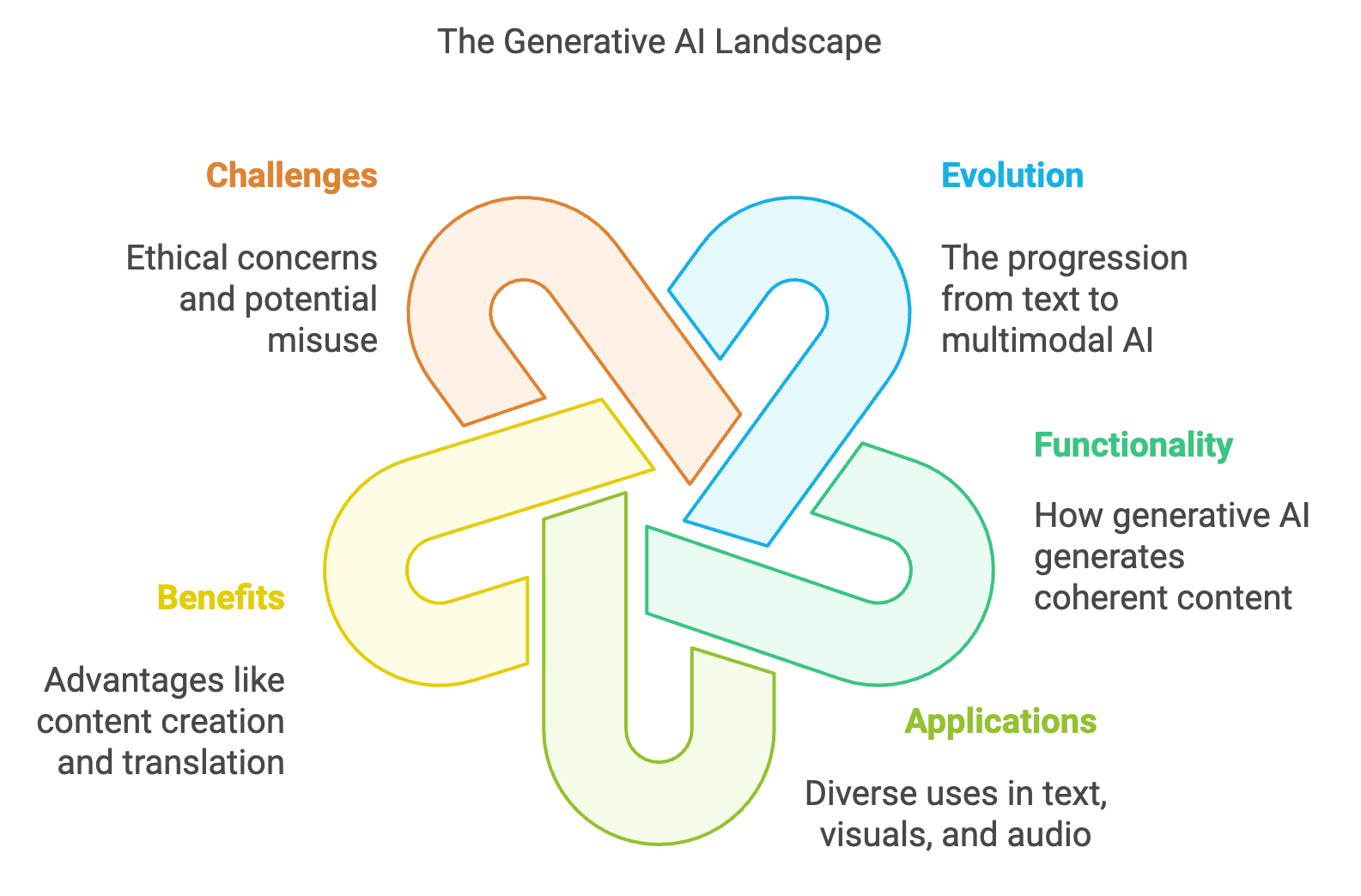
Generative AI is revolutionizing industries, unlocking new possibilities in content creation, automation, and innovation. At Hidevs, we provide the tools and resources to help you learn and master Generative AI, empowering you to thrive in the AI-driven era.
Explore our innovations at www.hidevs.xyz and join us in shaping the future of Generative AI.
We all know that generative AI is a significant innovation in the field of artificial intelligence that is helping various industries today. Using the power of transformers, this technology is designed to generate content in the form of text, graphics or code.
In this article, we will delve deeper into the world of Generative AI, learn how it works, and examine potential applications and future prospects.
Generative AI
Generative AI is rooted in the idea of creating content that is coherent and meaningful. Deep down we know that today's technology is based on massive AI models, which are now referred to as foundation models. Even these effective models have been trained on huge amounts of data and have a remarkable ability to interpret and generate human-like responses.
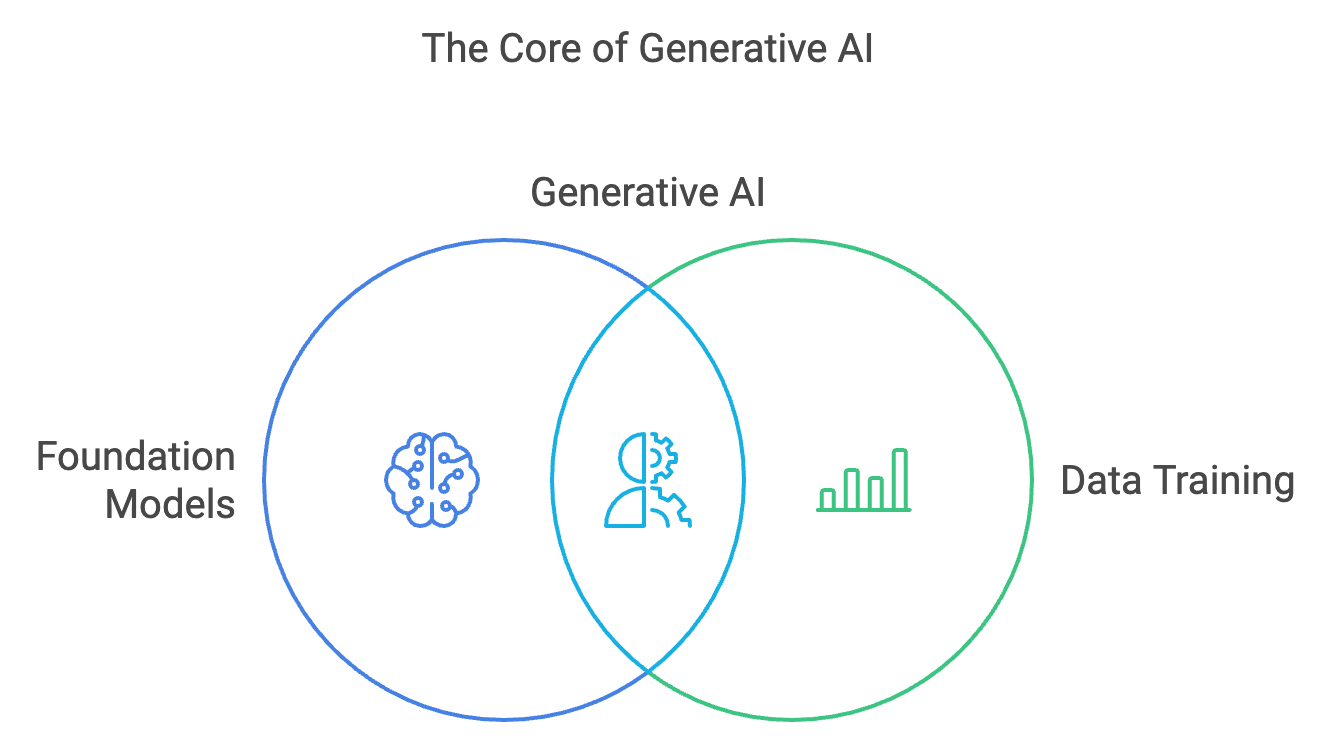
The Evolution of Generative AI
Text-Driven Beginnings: Generative AI, known as Gen AI, started its journey primarily in the realm of text. Models like GPT amazed the world with their text completion and generation abilities, making them pioneers in the AI landscape.
Visual Imagination: Gen AI swiftly expanded into the visual domain. Innovations like CLIP and DALL-E allowed AI to interpret images based on textual descriptions and, remarkably, generate images from text prompts. This breakthrough unlocked new creative horizons, from art generation to content creation.
Harmonious Melodies: Audio wasn't left behind. Models such as MuseNet and Jukebox empowered Gen AI to compose original music and generate spoken content. Podcasts, voiceovers, and music compositions were no longer the sole domain of humans.
Multimodal Convergence: The latest phase in Gen AI's evolution involves bringing text, images, and audio together seamlessly. Models like CLIP, which can understand and relate text and images, have the potential to revolutionize content recommendation and image search.
Boundless Possibilities: The future of Generative AI holds immense promise. It's on a trajectory towards even more sophisticated multimodal creativity, blurring the lines between human and machine-generated content.
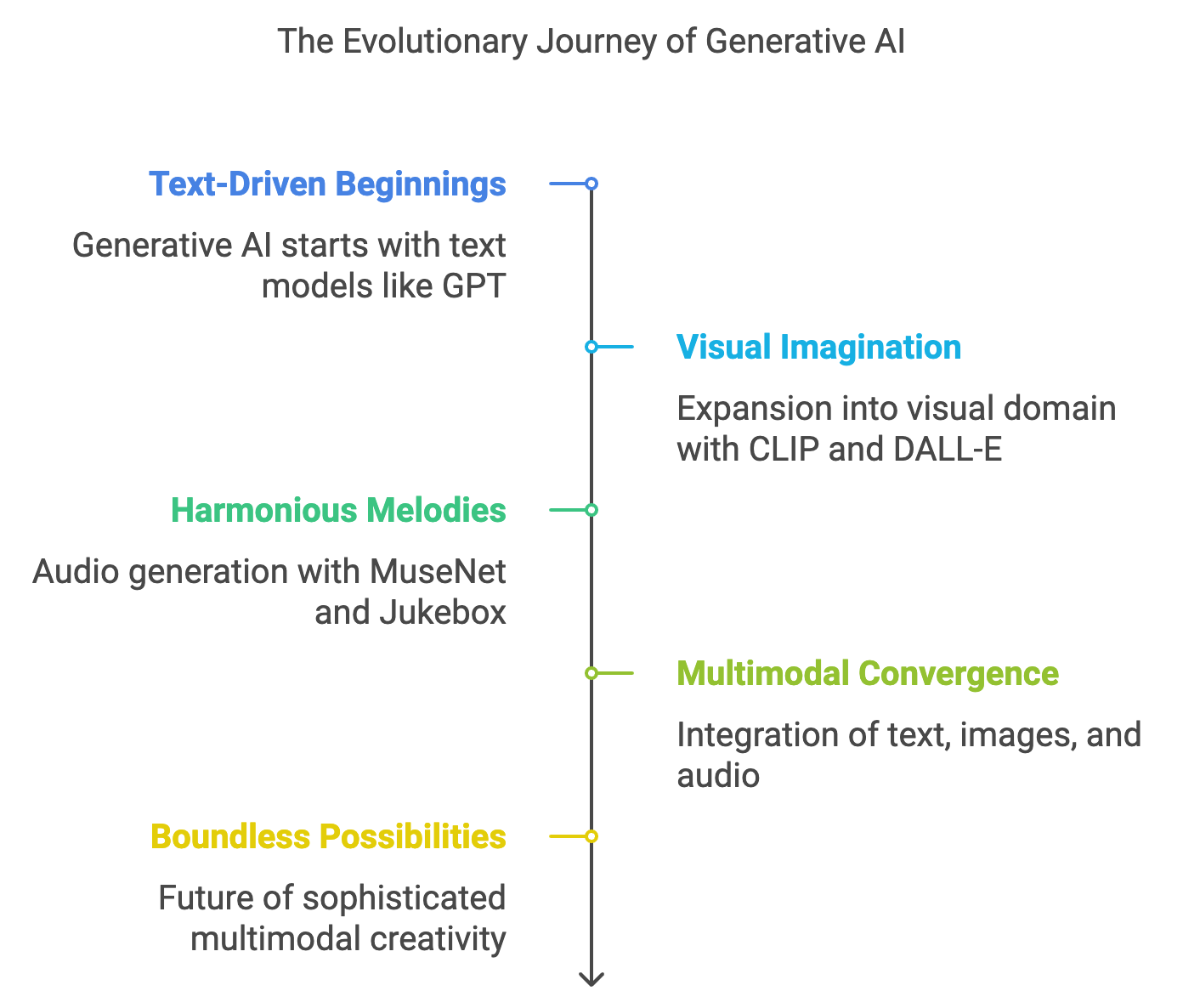
How does generative AI work?
Generative AI works like a language artist. It uses complex neural networks, like RNNs and Transformers, which have learned from lots of text.
When it's time to create something, the AI starts with a few words. It uses what it has learned to guess the next word or phrase, based on patterns it knows from its training. It keeps doing this word by word, creating text that makes sense and fits the topic.
The secret to generative AI's success is its skill in picking the next word using probability from all the language data it knows. This makes it great for tasks like writing, chatbots, and more.
Types of Gen AI
Textual Wizards: GPT-3 and its ilk craft compelling text, mastering language generation.
Visual Magicians: CLIP and DALL-E conjure images from text, forming a bridge between words and visuals.
Sonic Composers: Models like MuseNet and Jukebox create melodies and spoken content.
Multimodal Maestros: CLIP melds text and images, revolutionizing content recommendations.
Scientific Explorers: AlphaFold pioneers protein folding solutions.
Chat Companions: ChatGPT holds virtual conversations, serving as virtual knowledge companions.
Custom Creators: BLOOM caters to tailored content needs.
AI Artists: DALL-E's artistry turns words into visuals.
Educational Enablers: Generative AI supports learning by crafting educational materials.
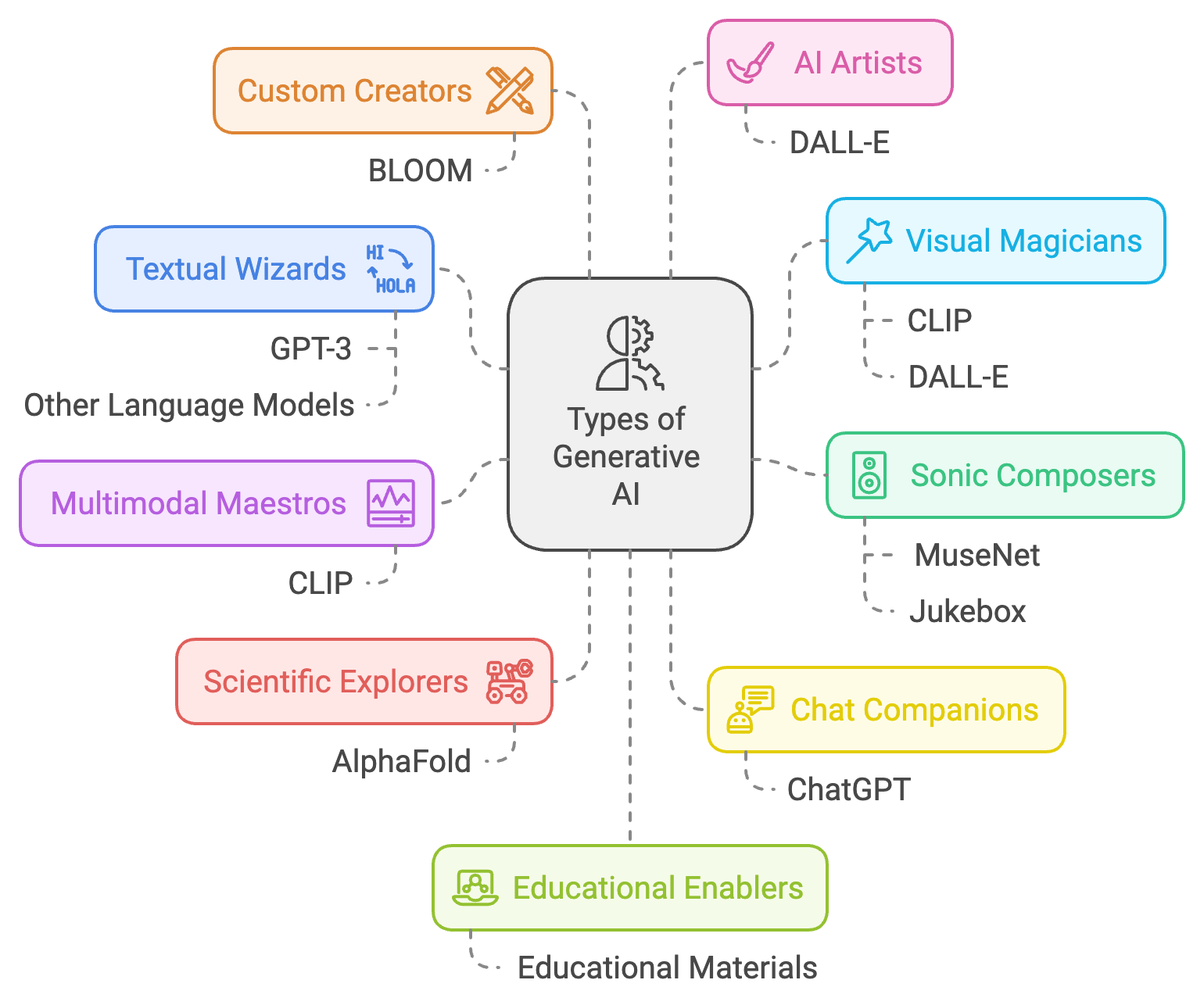
Looking to leverage these technologies? Explore how Hidevs can help: www.hidevs.xyz.
Benefits
Generative AI has far-reaching applications across various domains, and its potential benefits are immense:
Content Generation: Generative AI can help automate content creation, making it valuable for content marketers, writers, and journalists. It can assist in generating reports, articles, and even creative pieces.
Language Translation: With the ability to translate text from one language to another, Generative AI is a valuable tool for breaking down language barriers and facilitating global communication.
Virtual Assistants and Chatbots: Many online tools and chatbots have incorporated Generative AI, providing users with more human-like interactions and responses to their queries.
Image and Video Generation: AI models like DALL-E and CLIP can generate images based on textual descriptions or vice versa.
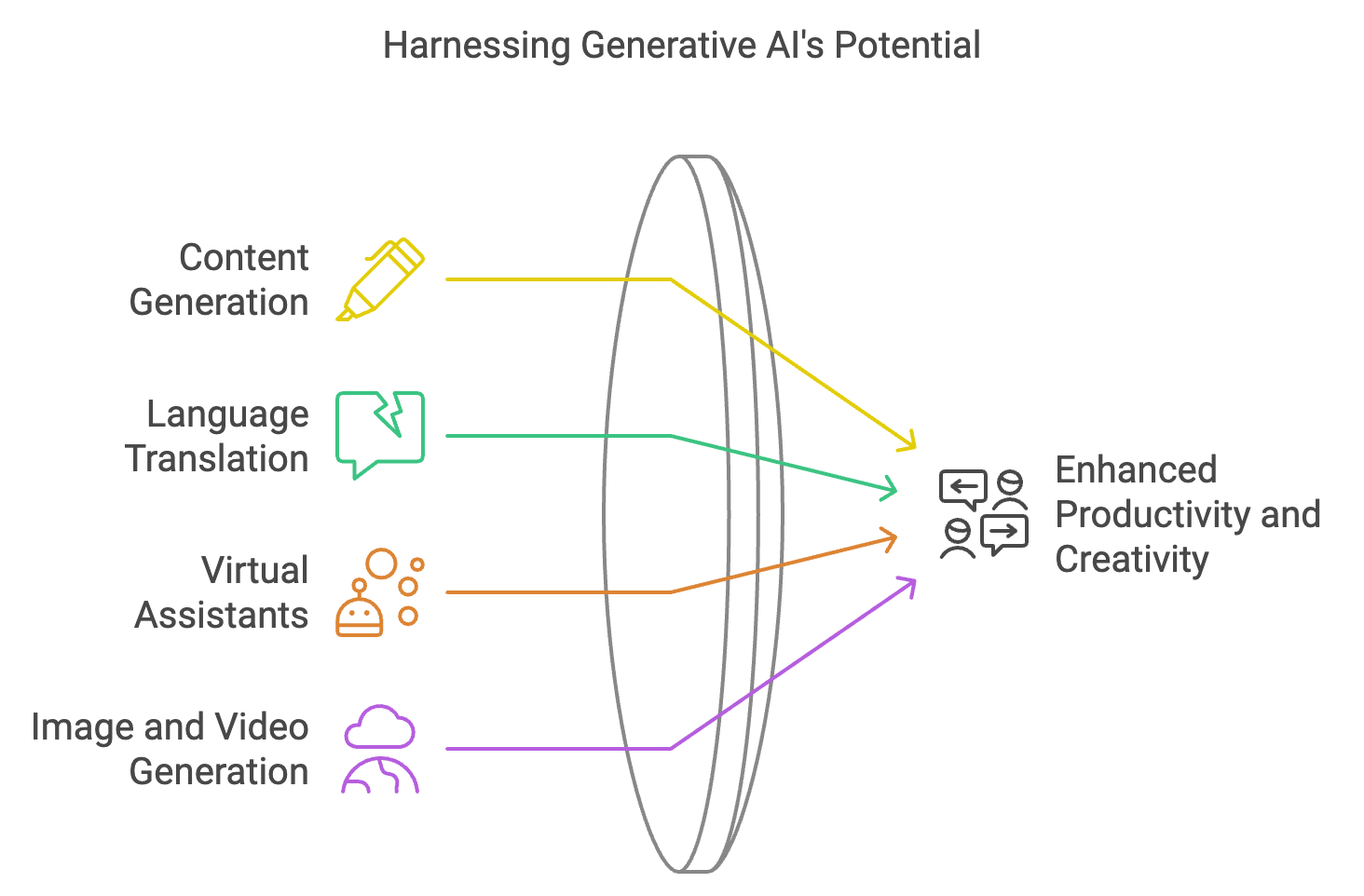
Challenges
Misuse Potential: The immense potential of generative AI is accompanied by concerns about misuse. AI-generated content can be exploited for misinformation, deepfakes, and copyright violations.
Ethical Usage: Developers are establishing guidelines for ethical use to ensure that generative AI technologies are not used in harmful or unethical ways. This includes designing rules and frameworks to address potential issues.
Bias in AI: The problem of bias is pervasive in AI systems. AI models trained on biased or disrupted datasets can inadvertently perpetuate stereotypes and biases. Addressing these ethical concerns and conducting ongoing research is crucial to making generative AI responsible and safe.
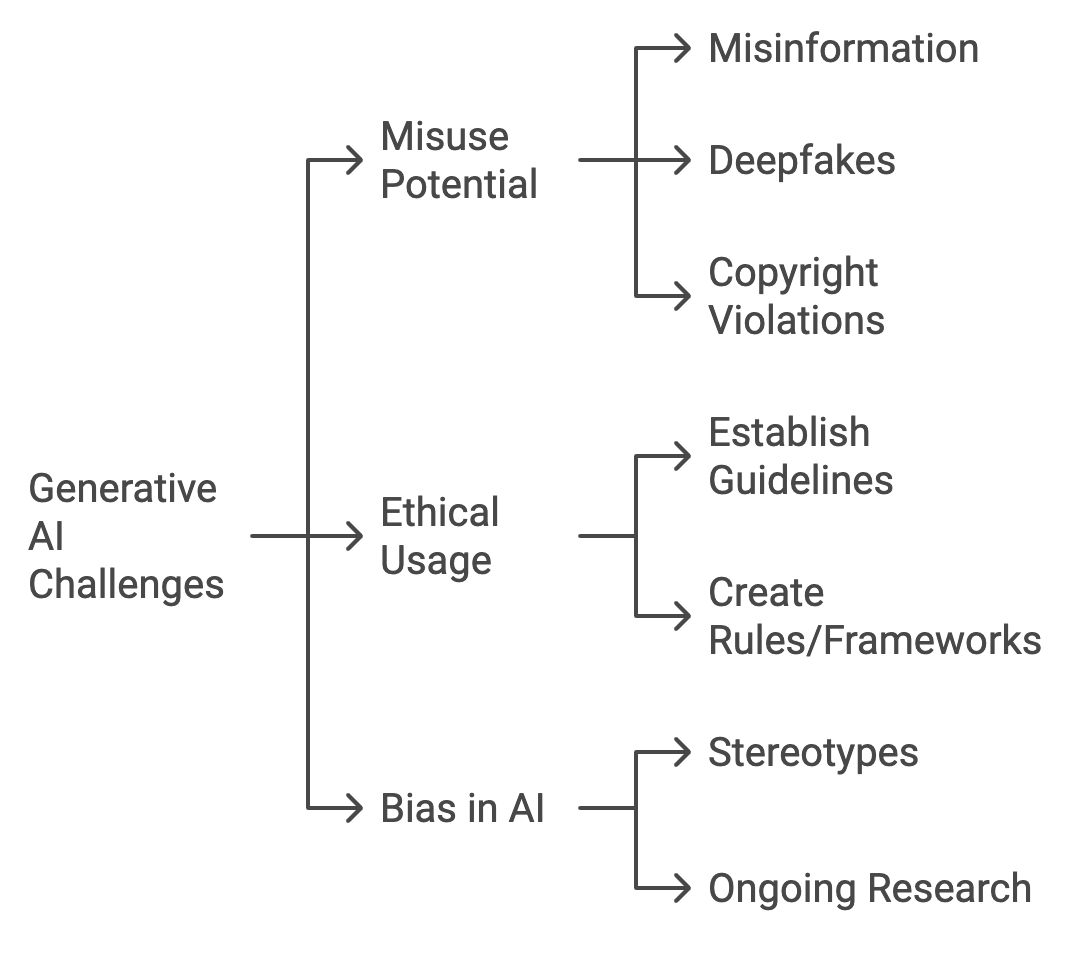
At Hidevs, we provide accessible education in Generative AI, equipping you with the knowledge to navigate AI technologies responsibly. Learn more at www.hidevs.xyz.
Examples of Gen AI in use today
Because of developments like OpenAI's ChatGPT and DALL-E, generative AI has grown extremely popular in 2023. People are becoming more interested in generative AI as AI technology has advanced significantly, particularly in interpreting human language. This makes generative AI more accessible to more people.
Major tech giants are harnessing generative AI to enhance their products and services:
Google: Google boasts two powerful language models, Palm (a multimodal model) and Bard (a pure language model). They are integrating generative AI into their suite of workplace applications, putting this technology into the hands of millions of users.
Microsoft: Microsoft is following suit by embedding generative AI technology into its products. They leverage the buzz around ChatGPT, giving them an advantage in this competitive landscape.
IBM: IBM stands out with multiple foundational models and a robust capacity to fine-tune both its models and third-party offerings by injecting data and retraining the AI.
Finally, Generative AI is an exciting new frontier in artificial intelligence that has the potential to revolutionise numerous sectors by automating tasks, increasing creativity, and improving customer experiences. It is critical to proceed with caution, addressing ethical and privacy concerns while capitalising on this technology's enormous potential. As Generative AI develops and matures, it is vital that it is guided by principles of responsibility and equality in order to optimise its benefits for the betterment of humanity.
Learn and Grow with Hidevs:
• Stay Updated: Dive into expert tutorials and insights on our YouTube Channel.
• Explore Solutions: Discover innovative AI tools and resources at www.hidevs.xyz.
• Join the Community: Connect with us on LinkedIn, Discord, and our WhatsApp Group.
Innovating the future, one breakthrough at a time.
Subscribe to my newsletter
Read articles from HiDevs community directly inside your inbox. Subscribe to the newsletter, and don't miss out.
Written by
